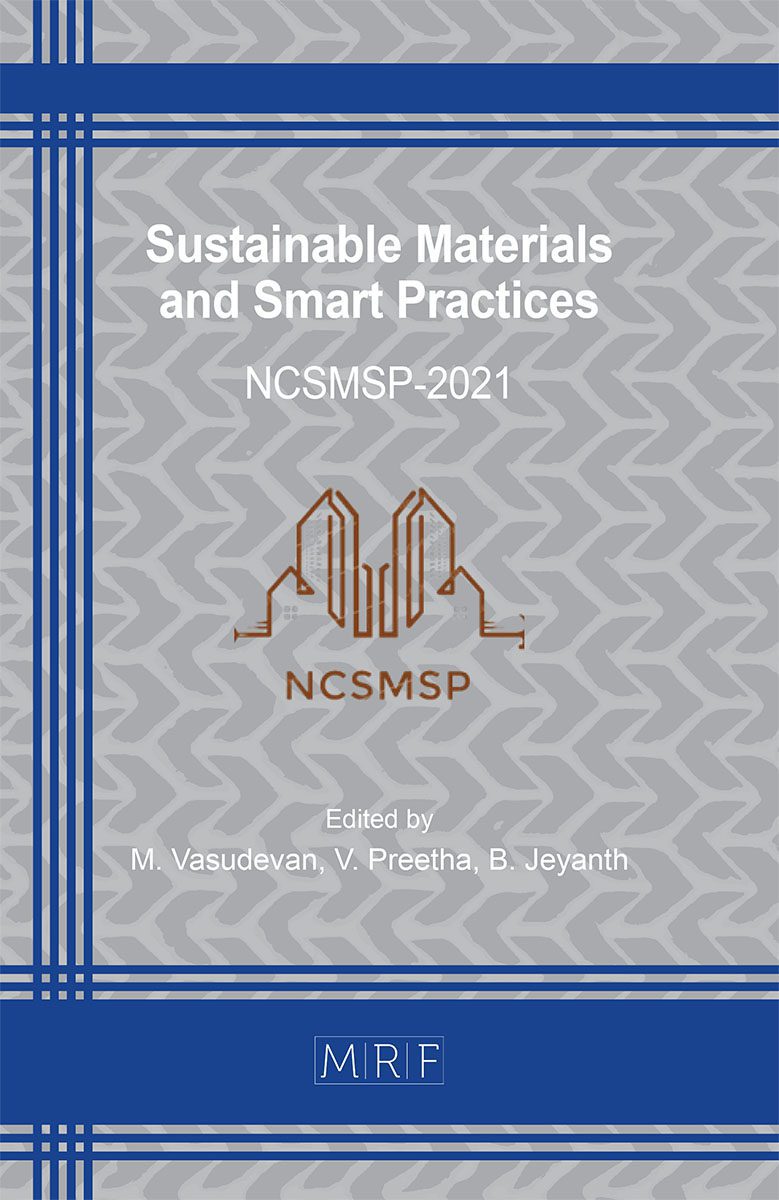Experimental Study on Strength of Concrete using Glass Fiber
K. Rajendhiran, S.Gopinath, G.Rajasekar
download PDFAbstract. Plain concrete retains veritably low tensile strength, limited rigidity and little resistance to cracking. Cracks are innately present in concrete and their poor tensile strength is due to propagation of similar micro-crack filaments when added at certain chance in the concrete to ameliorate the strain parcels as well as crack resistance, to rigidity as flexure strength and durability. Substantly, the studies and exploration of fiber corroborating concrete has been diverted to sword filaments. In recent times, glass filaments have also become available which are free from erosion problems associated with sword filaments. In this design, examination was conducted using glass fiber with concrete. Anti crack, hyperactive dissipation, alkali resistance glass fiber of periphery 14 microns, having an aspect ratio of 857 were employed in probabilities, varying from 0.33 to 1 chance weight in concrete and the parcels of this fiber corroborated concretelike contraction,flexure strength, durability,and tensile strength was studied.
Keywords
Light Weight Concrete, Glass Fiber, Compressive Strength, Flexural Strength and Spilt Tensile Strength & GFRC
Published online , 6 pages
Copyright © 2022 by the author(s)
Published under license by Materials Research Forum LLC., Millersville PA, USA
Citation: K. Rajendhiran, S.Gopinath, G.Rajasekar, Experimental Study on Strength of Concrete using Glass Fiber, Materials Research Proceedings, Vol. 23, pp 290-296, 2022
DOI: https://doi.org/10.21741/9781644901953-33
The article was published as article 33 of the book Sustainable Materials and Smart Practices
![]() Content from this work may be used under the terms of the Creative Commons Attribution 3.0 licence. Any further distribution of this work must maintain attribution to the author(s) and the title of the work, journal citation and DOI.
Content from this work may be used under the terms of the Creative Commons Attribution 3.0 licence. Any further distribution of this work must maintain attribution to the author(s) and the title of the work, journal citation and DOI.
References
[1] Chandramouli, Imran (2010), “cladding of buildings”, third edition published 2002, pp.82.
[2] Chawala and Tekwari (2012), “Performance of Glass Fibre Reinforced concrete “, International journal of Inovations in engineering and technology (IJIET), volume I Issue 6 pp.264-248.
[3] Gaurav Tuli, Ishan Garg, (2002), ‘Why Alkaline resistance Glass Fibre “, IOSR Journal of civil Engineering , volume 13,issue 3
[4] Jyothikumari (2012) “Manufacture of Glass Fibre Reinforced concrete products”, Unit 1, Division of YOGI group UAE, August 2008.
[5] Pitrodaet al. (2015), “ Effect of Glass Fibre Reinforced in Rigid Pavements”, International Journal of scientific Research and education and research and education (IJSAE), Volume 2 Issue 9,,pp.1797-1804.
[6] Ravikumar and Indess, (2013) “Fibre Reinforced Cementitious Composities “, second Edition Thandavamoorthy, “Performance of Glass Fibre Reinforced Self Compacting Concrete”, international Journal of Engineering Development and Research (IJEDR)
Volume3 Issue 2, pp.755-760.
[7] Subramani. T , A. Mumtaj (2006), “Fibre Reinforced Cement Composites” , Arnon Bentur and Sidney M, Chapter 8, pp.278
[8] Ahmad, Structural behavior of precast lightweight concrete sandwich panel under eccentric loading: an overview. ,2008
[9] Ahmed Fouad Elragi, (2006) Selected Engineering Properties and application of EPS.
[10] Nahro Radi Husein et al., [2013] An experimental study on using lightweight web sandwich panel as a floor and slab. International journal of Innovative Technology and exploring engineering.2013, (IJITEE)
[11] Poluraju., [2014] Journal of sandwich structures and materials.
[12] TR Greeley – 1997 A Review of Expanded Polystyrene (EPS)Properties, Performance and New Applications.
[13] Karthik Jet al (2014), “Experimental Study on Strength Characterisitics on M20 Concrete with Partial Replacement of Fine Aggregate with Copper Slag” International Journal of Advanced Research.
[14] Binaya Patnaik et al (2014), Strength and Durability Properties of Copper Slag Admixed Concrete” International Journal of Research in Engineering and Technology.
[15] Balamurugan et al (2013) “Use of Quarry Dust to Replacing Sand in Concrete – An Experimental Study” International Journal of Science and Research Publications.































